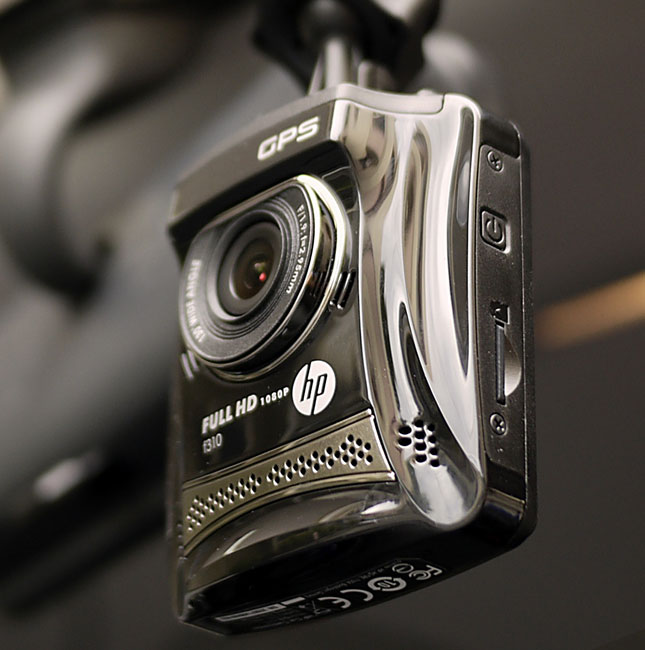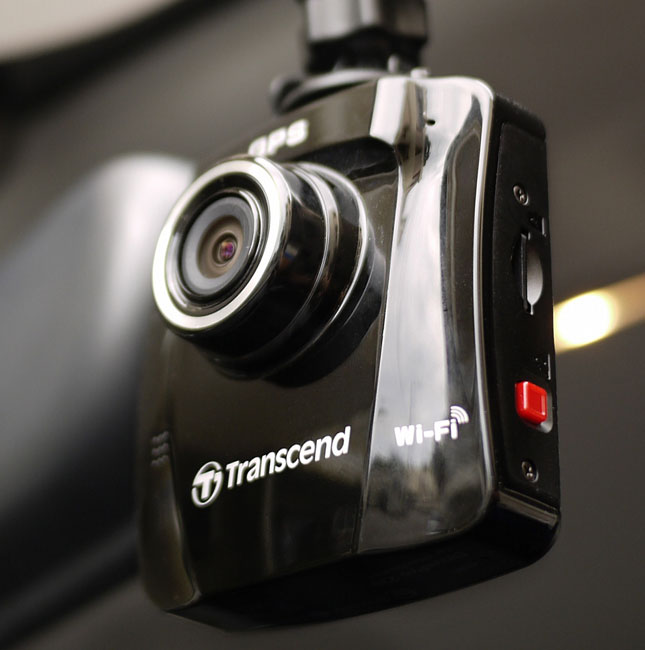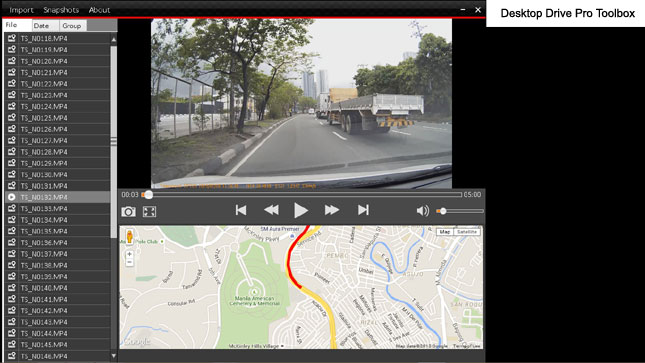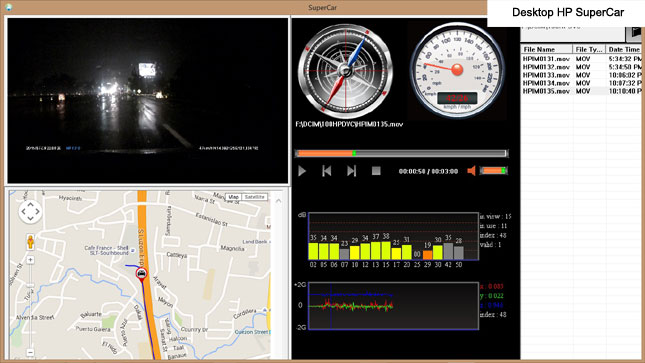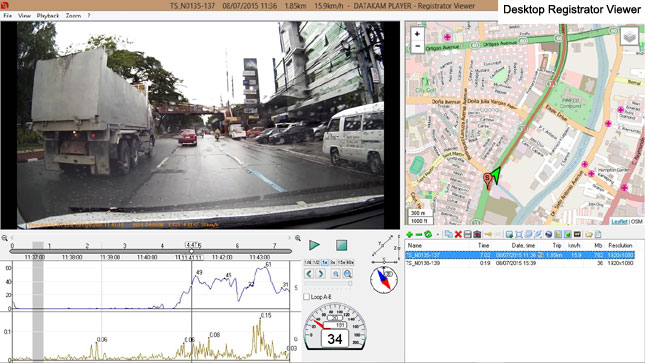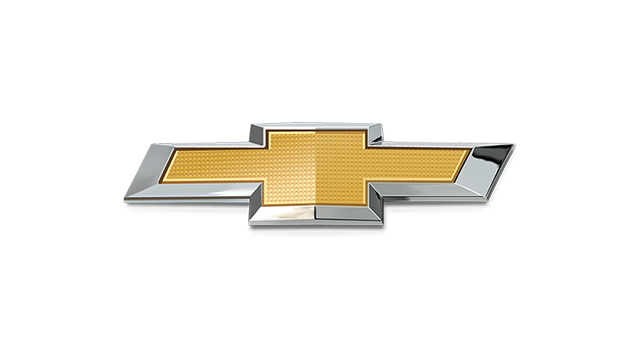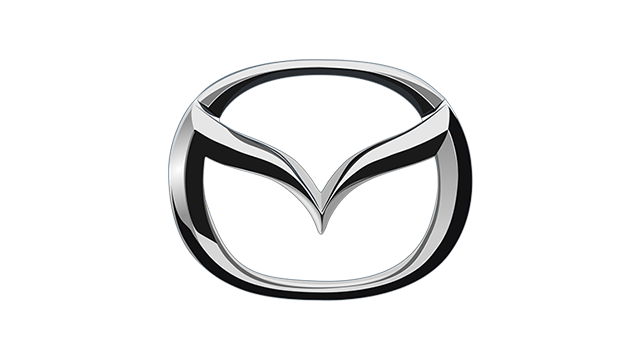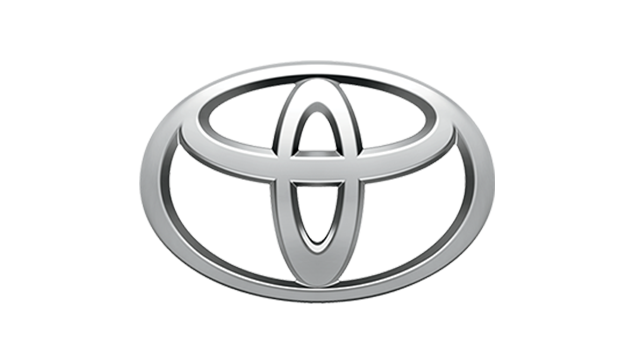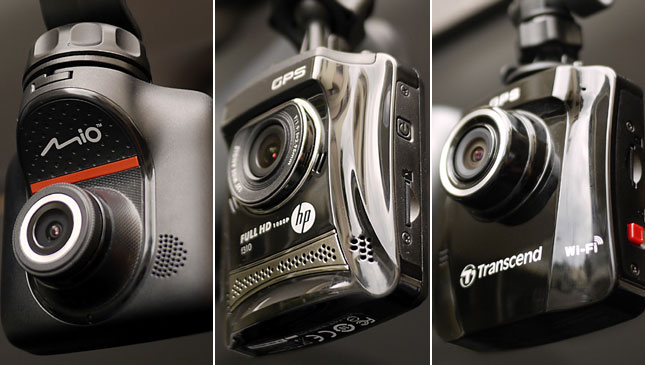
Some people might scoff at dashboard cameras with their low megapixel count, tiny LCD screens and zoomless lenses, but these things are built to run under a hot windshield for hours on end. It's a duty that exposes your expensive GoPro or smartphone to undue heat and stress, as anyone who has overheated a smartphone or burned an SD card can attest to!
Beyond that, dash cams feature useful extras, such as collision detection, emergency video protection, GPS and speed/position recording. But not all dash cams are built the same. Here, we have three good cameras for under P8,000. But which is the best?
Here are the contenders:
| HP F310 | MIO MIVUE 568 | TRANSCEND DP220 | |
| Price | P7,999 | P7,095 |
P7,350 |
| Warranty | one year | one year | two years |
| Sensor | 3.5MP | 3.0MP | 3.0MP |
| Aperture | f1.9 | f1.8 | f1.8 |
| Battery life | 30 minutes | 60 minutes | 30 minutes |
| Output | .mov (approx. 100MB/min at 1080) and .nmea (GPS) | .mov (approx. 100MB/min at 1080) and .nmea (GPS) | .mp4 (approx. 100MB/min at 1080) and .nmea (GPS) |
| Package inclusion | car charger, mount, DVD | car charger, mount, DVD | car charger, mount, 16GB SD card |
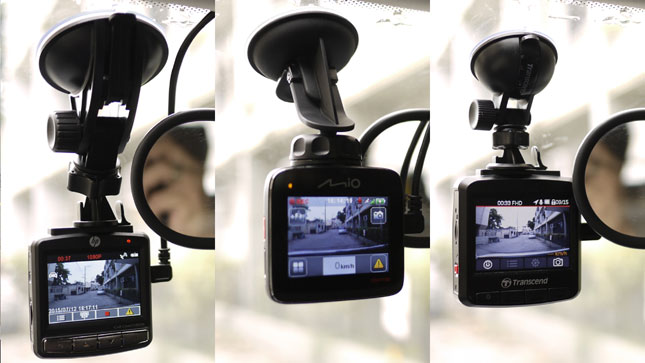
FORM FACTOR/MOUNTING
Looks shouldn't matter, but with that camera hanging in front of you, you'll want reassurance it's worth the money, right? To our eyes, the Mio MiVue takes the prize, with its slim mount and touchscreen interface. The others look like cheap webcams in comparison.
The MiVue also has the friendliest mounting hardware here: a simple ball mount with a tightening collar and a quick-release suction cup. The stiff suction cup needs a little more pressure to secure than the others, but the Mio is easiest to adjust and suffers less vibration than the others.
The Transcend DP220's extra adjustment makes it easier to hide behind the mirror, but the small knobs are fiddly. The HP F130's long mount, on the other hand, is the most obtrusive and most susceptible to vibration.
Advantage: Mio MiVue 568
START-UP/GPS LOCK-ON/SHUTDOWN
Having a single 12V socket is a hindrance when mounting multiple cameras. For testing, we connected the cameras to a multi-socket power bank for hours of battery-powered runtime. All three start recording the moment they power up, and go to sleep when unplugged.
The HP starts nearly instantaneously, but the Transcend pips it by a second, every time. The Mio takes half-a-minute to boot, and nearly two minutes to acquire GPS lock-on, whereas the others lock on in half the time.
Advantage: HP F310 and Transcend DP220 (tie)
DISPLAY/CONTROLS
The HP is the only camera with the option to toggle recording in viewing mode, and has a neat compass/GPS screen. Its fiddly menu system is a letdown, though.
The Mio touchscreen interface is impressive, but the screen itself is rather dark. The Transcend's on-board controls are similar to the HP's, but with quicker response and bigger on-screen text, while Wi-Fi connectivity and a smartphone app let you stream, review and manage videos with a simple and intuitive interface.
Advantage: Transcend DP220
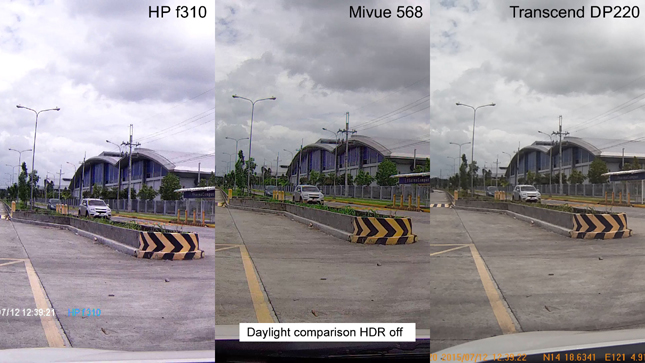
VIDEO QUALITY
The HP's big sensor gives excellent resolution, but video output is blocky, with only modest contrast. "Wide Dynamic Range" mode attempts to brighten darker areas, but in the end simply creates washed-out video.
Transcend's DP220 features the most natural color and the widest field-of-view here, and adjusts to dynamic lighting better than the F310. The only nit is in-camera noise-cancellation, which sacrifices detail for a cleaner picture.
The Mio MiVue 568's videos seem oversharpened and noisy, even in "High Dynamic Range" mode, but it has the clearest output of the three.
Advantage: Mio MiVue 568
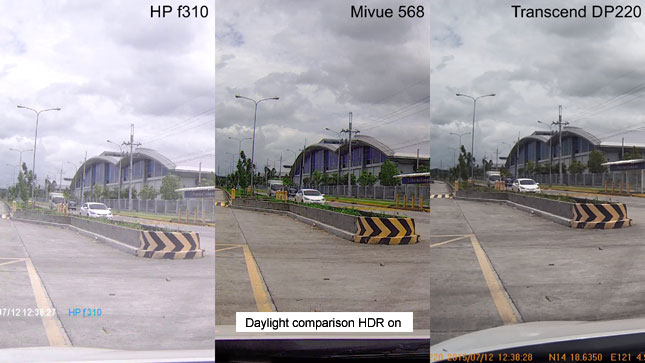
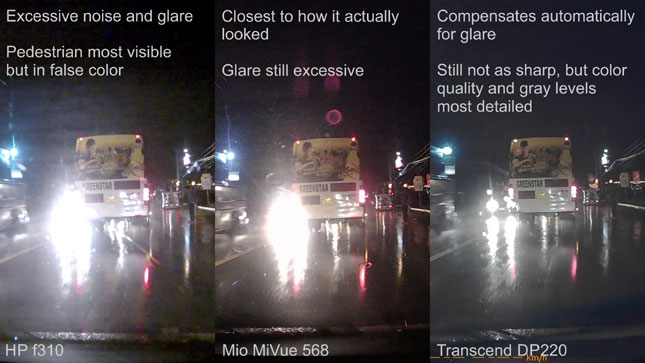
NIGHTTIME VIDEO
The HP's smaller f1.9 aperture is a serious handicap at night. Excessive glare, banding and overblown colors dominate, as in-camera processing tries vainly to compensate for poor low-light sensitivity.
The Mio maintains its clear output, but videos are dark, and exposure adjustment is needed to minimize glare. The Transcend is relatively untroubled by glare, and low-light performance is fantastic, exposing details and shades of gray that even HP's overeager processing misses out on.
Advantage: Transcend DP220
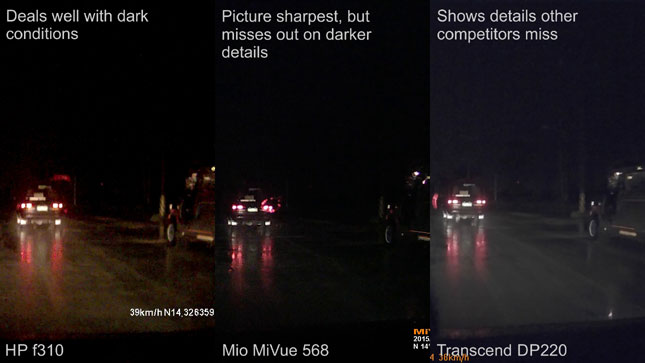
COLLISION DETECTION
Collision detection sets off "emergency mode," automatically write-protecting and saving the current file. The DP220, set on 'medium', will trigger on hard braking or cornering. The MiVue has more sensitivity levels, but takes some fiddling to set properly. The HP lacks any sensitivity settings, and requires an actual impact to trigger.
Advantage: Mio MiVue 568/Transcend DP220 (tie)
EXTRA FEATURES
All three cameras feature parking-mode standby security. The HP and the Mio also feature programmable speed limiter modes, with user-set limits for multiple stretches of road. The Transcend has a more generic speed buzzer, but this is supplemented by lane departure and front collision warnings, with neat graphical overlays. Then there's the smartphone streaming app. There's some delay in the video feed, but it's still cool.
The MiVue and the F310 come bundled with CD software to view your videos. Transcend makes you download theirs. Mio's software is easily best of the three, with three-axis G-Sensor and Google Map readouts playing along with the video. G-Sensor and GPS data only update once per second, so it's no patch real race telemetry. But it's still pretty neat. You can also download it for free here.
HP's more generic SuperCar software is similar but buggy, and doesn't work with .mp4s. Transcend's DrivePro Toolkit, on the other hand, features Google Map integration only. That said, you can download free software that will give you the same functions as the other two at Registrator Viewer.
Advantage: Mio MiVue 568/Transcend DP220 (tie)
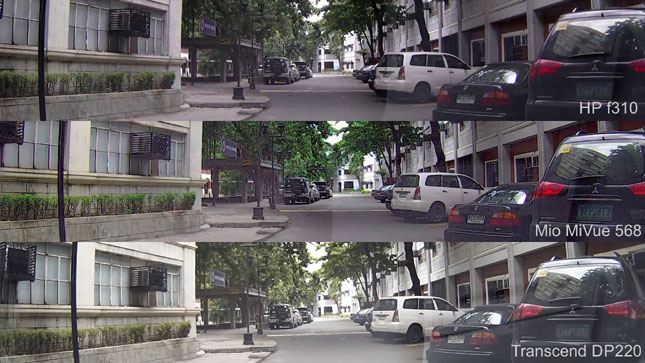
THE VERDICT
In the end, the HP F310 is proof that megapixels aren't everything. It's a good camera, but lacks a clear advantage over its rivals, landing it in third. The fight between the other two is less clear-cut.
The Mio MiVue 568 is a great camera, with the sharpest output, the slickest interface and the best software. The Transcend DP220, on the other hand, is faster and just as easy to use, with the widest viewing angle and the best nighttime performance. The free smartphone app is simply icing on the cake. Who needs a touchscreen when you have a smartphone remote control?
And then consider the longer warranty and the bundled SD card--representing some P500 value--and the Transcend presents itself as the best buy of this particular bunch.
But if you decide to get the Mio, we wouldn't blame you.
Winner: Transcend DP220
UPDATE: We corrected the price of the Mio MiVue 568. Turns out it's significantly cheaper than the figure we initially posted.
Photos by Niky Tamayo
